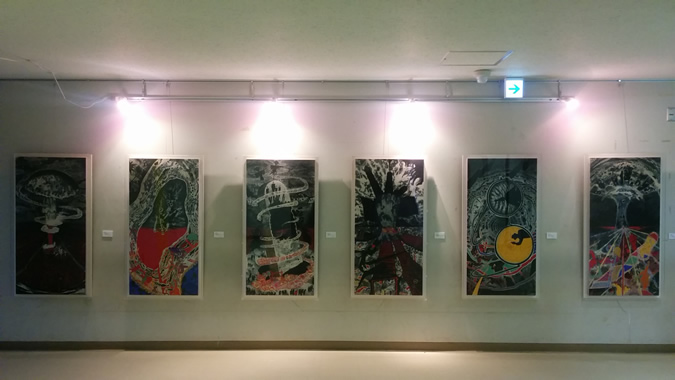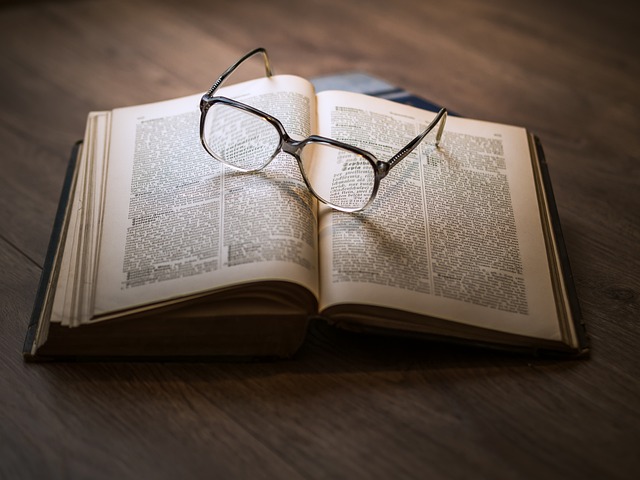お家に掛けられる現代アート作品をご紹介し、日常にアートを取り入れる楽しさをお伝えできればと思い綴っているブログです。
作品や作家を知ることから、あなたにとって特別な作品との出会いに繋がれば嬉しいです。
今回は、すどう美術館 須藤一郎館長の「館長のひとりごと」を掲載します。
評伝田口雅巳
画家田口雅巳さんのことを顕彰させていただきたいと思います。
田口さんは私と同じ年の生まれです。もっとも私は早生まれですので学年で言えば私が1学年上ということになりますが…。残念ながら死に急ぎ、もう12年前、74歳でこの世を去ってしまいました。
田口さんの話では、鎌倉高校時代から美術の作品を発表しており、遠回りはしたくないとの思いから美術の大学に行かず、高校卒業と同時に画家の道に進んだとのことでした。そして、生活のためにしばらく映画館の看板描きをしたそうです。そのころの映画館は上映する映画を看板描きに描いてもらい宣伝していたのです。
さて、私が初めて田口さんにお会いしたのは1989年のことでした。
当時、日本橋にあった東邦画廊で田口雅巳展というのを開催しており、どういう画家か全く知りませんでしたが、その中の作品「極楽繁盛図」にちょっと気が惹かれてしまいました。すかさず画廊オーナーの中岡さんがお持ちしますから家に掛けてみてくださいというのです。家に持って来られれば、もう、返すことができなくなるとわかりながら、抗しがたく、持って来てもらったのですが、その時、田口さんも一緒に見えたのです。
「極楽繁盛図」はかなり大きい80号の日本画です。ちょうど昭和が終わった時で、大きな鯨がどんと描かれていて、その中や上に、新幹線、パンダ、東洋の魔女と称されたバレーの女子、野球の長嶋など昭和の時代に現れたものがいっぱい見えます。鯨は捕鯨ができなくなったので象徴的に描いたものです。
このように時代性を風刺やユーモアで面白く表現していて、見れば見るほどいろいろなものが見えてきて楽しい作品です。
それが縁となり、一枚の絵の中に昭和の暗い時代と戦後の明るくなった時代を上下に分けて収めた6点シリーズの作品「昭和六道絵」、180×90㎝の2点セットの大きな「地獄極楽図」の作品などたくさん集めるようになってしまいました。
田口さんは日本画を始め版画、立体造形、洋画など幅広く制作しており、現代の世相、風俗を描いては第一人者と言われていましたが、一方では藤沢と鎌倉間を走る江ノ電や素朴な湘南の風景も描かれており、藤沢の小田急デパート他で個展をされていて、これはこれですごい人気がありました。
大沢昌助、難波田龍起、猪熊弦一郎、菅創吉など集めた作品とは多少異質と感じられるかもしれませんが、私には違和感はなく、田口さんとの親交は深まりました。
ところで、田口さんはもう一つの呼び方として、現代の河鍋暁斎と言われていたことです。河鍋暁斎(1831~1889)は江戸、明治に生きた狂画や戯画の画家で鋭い観察眼と反骨精神が感じられながら、ユーモアや風刺性があふれていて、ふたりには時代を超えた共通性がみられるのです。
私は1997年に町田の自宅美術館で、河鍋暁斎vs田口雅巳「地獄比べ」という展覧会を開催したことがあります。暁斎記念館を開設した女性眼科医のお孫さんや河鍋暁斎研究家などの協力を得、暁斎作品をお借りして、コレクションの田口作品と並べての展覧会です。
そしてその時、田口さんには講演をお願いしましたが、講演のテーマは「地獄・極楽・絵空事」。この世を地獄とも極楽ともみる二人の作品は何とも言えない興味深い展覧会であり、多くの方に鑑賞をいただきました。
田口作品が絡む展覧会ではよくトークをお願いしましたが、変わっていたのは、お酒の好きな田口さんには、お水ではなく演台にウイスキーの水割りを用意することでした。ところがいつのころからか、血糖値が高いので禁酒している、体調が悪いというようになり心配しておりましたが、2010年7月、訃報に接してしまったのです。死因は敗血症ということでした。
お葬式はゆかりのある藤沢の遊行寺の中の眞徳寺でしめやかに行われましたが、背後に絶筆となった「湘南ふすま絵」が4枚置かれていました。
鵜野政の名で画家として活動していた奥さんも後を追うように亡くなっており、私はこれからも田口さんのことを顕彰していきたいと考えているのです。
すどう美術館 館長 須藤一郎
協力:すどう美術館
写真:「昭和六道絵」田口雅巳(すどう美術館コレクション展より引用)
[ Gallery SUDOH director’s monologue ] Part34 “Masami Taguchi: A Critical Biography”
This is a blog that introduces contemporary art works that can be hung in your home.
I would like to share with you the joy of incorporating art into your daily life.
I hope that by looking at the artworks and artists, you will be able to encounter a special piece of art for yourself.
This time, with the cooperation of Ichiro Sudoh, Director of Gallery SUDOH, I will be posting [ Gallery SUDOH director’s monologue ] .
Masami Taguchi: A Critical Biography
I would like to honor the painter Masami Taguchi.
Mr. Taguchi was born in the same year as me. However, I was born early, so in terms of grade, I am one year older than him. Unfortunately, he was in a hurry to die and passed away 12 years ago at the age of 74.
Mr. Taguchi told me that he had been showing his art works since his days at Kamakura High School, and that he did not want to go to an art college because he did not want to take the long way around. He decided to become a painter as soon as he graduated from high school.
He then painted signboards for movie theaters for a while to make a living. At that time, movie theaters promoted the movies they were showing by having signboard artists draw the signboards.
It was 1989 when I first met Mr. Taguchi.
At that time, Toho Gallery in Nihonbashi was holding an exhibition of Masami Taguchi’s works, and although I had no idea what kind of artist he was, I was a little attracted to one of his works, “Prosperity in Paradise”. The gallery owner, Mr. Nakaoka, immediately said he would bring it to me and asked me to hang it at home. I knew that if I brought it to my house, I would not be able to return it, but I could not resist and asked him to bring it. At that time, Mr. Taguchi was with him.
The painting “Prosperity in Paradise” is a rather large No. 80 Japanese-style painting. It depicts a large whale at the end of the Showa period (1926-1989), and within and above the whale you can see many things that appeared during the Showa period, including a bullet train, a panda, a volleyball girl who was called the “Witch of the Orient,” and Nagashima, a baseball player. The whale is symbolic of the fact that whaling was no longer possible.
This work expresses the zeitgeist in such an interesting way with satire and humor that the more you look at it, the more you will see many things and enjoy it.
This led me to collect many works, such as “Showa Rokudo-e,” a series of six paintings that include the darker Showa period and the brighter postwar period in one painting, divided into upper and lower sections, and “Hell and Paradise,” a large 180 x 90 cm (2 x 180 x 90 cm) set of two paintings.
Mr. Taguchi is known for his wide range of works, including Japanese-style paintings, prints, sculptures, and oil paintings, and is considered one of the leading artists in depicting the contemporary world and its manners and customs.
On the other hand, he also painted the Enoden train running between Fujisawa and Kamakura and simple Shonan scenery.
His paintings were exhibited at the Odakyu Department Store in Fujisawa and other places, and they were very popular.
It may seem somewhat dissimilar to the works collected by Shosuke Osawa, Tatsuoki Nambada, Genichiro Inokuma, Sokichi Suga, and others, but I felt no discomfort, and my friendship with Mr. Taguchi deepened.
By the way, another way to refer to Mr. Taguchi is that he was called a Kyosai Kawanabe of our time. Kyosai Kawanabe (1831-1889) was a Kyoga and caricature artist who lived in the Edo and Meiji periods. He had a keen sense of observation and a rebellious spirit, but he was also full of humor and satire.
In 1997, I once held an exhibition titled “Hell Comparison” between Kyosai Kawanabe and Masami Taguchi at my home museum in Machida, Japan. With the cooperation of the granddaughter of the ophthalmologist who opened the Kyosai Memorial Museum and other scholars of Kyosai Kawanabe, I borrowed works by Kyosai and displayed them beside Taguchi’s works in my collection.
At that time, I asked Mr. Taguchi to give a lecture, and the theme was “Hell, Paradise, and Picturesque Things. The works of these two artists, who see this world as both hell and paradise, were indescribably interesting and were viewed by many people.
I often asked him to give talks at exhibitions involving Taguchi’s works, but what was unusual was that he would prepare a glass of whiskey instead of water at the podium for Mr. Taguchi, who loved to drink. However, he had been abstaining from drinking because of his high blood glucose level, and he had been in poor health for some time. The cause of death was sepsis.
The funeral was held at Sintokuji Temple in Fujisawa’s Yugyoji Temple, which is closely associated with him, and behind it were four “Shonan Fusuma-e” paintings, which had become last
His wife, who worked as a painter under the name of Uno Masa, also passed away in his wake, and I would like to continue to honor Mr. Taguchi in the future.
Ichiro Sudoh
Cooperation: Gallery SUDOH
Photo: “Showa Rokudo-e” by Masami Taguchi ( From Gallery SUDOH collection exhibition )
Translated with www.DeepL.com/Translator (free version)

